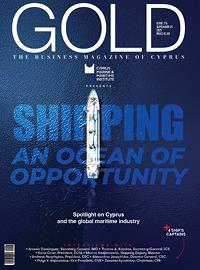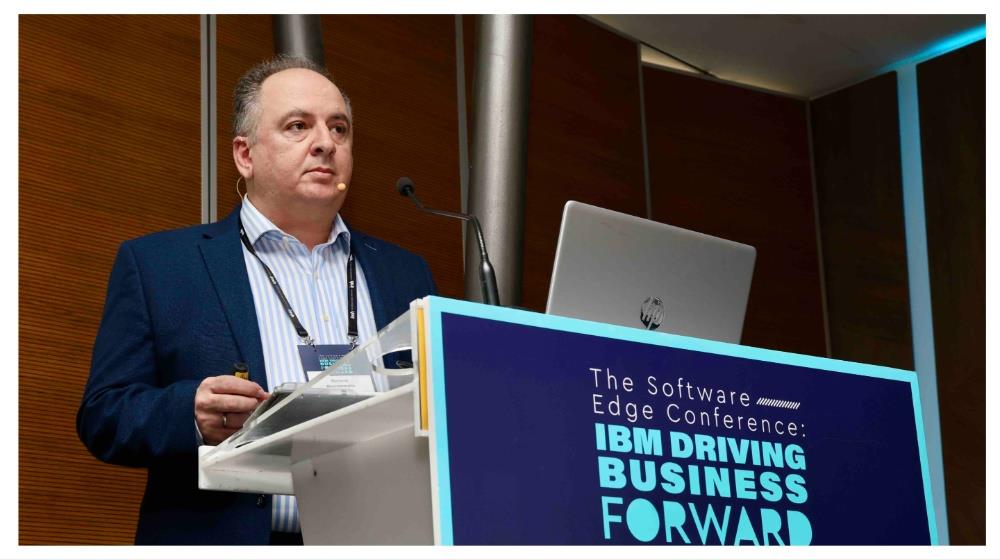What if the most threatening competitor in your industry... doesn't exist yet? Or if the next disruptor is a two-person startup using open source AI and cloud infrastructure?
With these words, Menicos Mavrommatis, Technology Lead, Cyprus & Malta, IBM opened his speech at ‘The Software Edge Conference: IBM Driving Business Forward,’ preparing the audience for a journey through the 10 technological trends that are shaping tomorrow for both businesses and society itself.
Technology, he says, doesn't just evolve. It accelerates. And this acceleration leaves no room for stagnation. Reorganisation is no longer a strategic choice; it is an existential necessity.
Mavrommatis presented the picture of a new reality, where artificial intelligence, hybrid cloud and cybersecurity cease to be "experiments" and become integral parts of the way we work, produce value and collaborate.
The first trend he records is the transition of genetic artificial intelligence from the stage of experimentation to implementation.
Businesses are now daring to move to the productive application of such technologies, although the obstacles are still significant. According to Mavrommatis, it will take time - even years - to fully exploit these investments. But the momentum is undeniable.
A second trend concerns the adoption of appropriate, targeted artificial intelligence models, the so-called fit-for-purpose models.
Instead of investing in huge, generic models, businesses are now turning to specialised solutions that are more efficient, economical and flexible, tailored to their own needs and conditions.
The third trend in a row, according to Mavrommatis, is the growing awareness that leveraging business data itself is the key to achieving real differentiation and value. It is not enough to “run” AI models, but you need to train them with the right, proprietary data. And this requires processes for data governance, cleansing and integration.
Mavrommatis emphasised that without proper data, AI outputs can be incorrect, biased, or unclear, something that no serious organisation can allow.
The fourth trend he highlighted is the need for trust. Artificial intelligence may have reached high levels of performance, but if people don’t trust it – whether it’s employees, customers or management – it won’t be able to be adopted at scale. Transparency, the ability to interpret results, regulatory compliance and good governance are essential elements to establish that trust.
Mavrommatis' fifth observation relates to the operational difficulties that organisations encounter when attempting to implement genetic artificial intelligence on a large scale. Data, skills, infrastructure, model updates, security: all of these make up a demanding and often labyrinthine landscape.
The presentation then turned to the other critical pillar: hybrid cloud. The sixth trend is about the need for performance and value from existing cloud investments. Despite high spending in recent years, many organisations are still not seeing the expected benefit. The reasons? From legacy technology dependencies to unforeseen costs and a lack of strategic performance measurement.
The seventh trend highlights that the hybrid cloud has become the new norm. Organisations operate in multiple environments: public cloud, private cloud, on-premise, SaaS, and even edge. Agility is critical, and strategy must take this complexity into account from the start.
An eighth observation focuses on the increased complexity and cost when environments are isolated and poorly interconnected. The absence of holistic architecture increases operational burden and reduces efficiencies. Even a seemingly simple environment with an on-premise solution and a cloud provider can be problematic if it is not designed with flexibility and coherence.
The ninth trend, which the expert particularly emphasises, is that pre-planned hybrid architecture, the so-called hybrid by design, produces up to three times the return on investment. In contrast, the “lift-and-shift” strategy, i.e. simply transferring old solutions to the cloud, without adaptation, conceals pitfalls.
Just as in the past, when security was not part of the original design of applications and was added later at great cost, so too now, failing to design for the cloud from the start will cost us dearly.
The tenth and final trend is the power of open source software as a driver of innovation. In a world where technology is evolving daily, open source software offers the flexibility and collaboration needed to support the new digital ecosystem. Platforms like Kubernetes, Linux infrastructure, and shared AI models are now the new standard.
The Technology Lead Cyprus & Malta closed his presentation with a reference to IBM's own strategy, which is based on two pillars: Red Hat OpenShift for hybrid cloud and WatsonX for artificial intelligence, two platforms based on open technology, business value and real reliability.
And, of course, all of this cannot be done without partnerships. The role of partners in Cyprus and internationally is crucial, as the ecosystem is what transforms technology into results, Mavrommatis concluded.
Organised by IMH, the Conference, taking place in Nicosia, has the following sponsors:
Gold Sponsors:
NewCytech Business Solutions
DataTech I.T. Solutions
Zebra Consultans
drastyc
Silver Sponsor:
EY
(Source: InBusinessNews)









